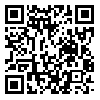Volume 19, Issue 3 (9-2022)
jor 2022, 19(3): 113-131 |
Back to browse issues page
Download citation:
BibTeX | RIS | EndNote | Medlars | ProCite | Reference Manager | RefWorks
Send citation to:



BibTeX | RIS | EndNote | Medlars | ProCite | Reference Manager | RefWorks
Send citation to:
Mohammadi Alashti P, Nojavan M, Mohammaditabar D. Developing a Reliability-Redundancy Allocation Problem with Fuzzy Constraints and Considering System Failure Risk (Case Study: Wing Connections of a Flight Structure). jor 2022; 19 (3) :113-131
URL: http://jamlu.liau.ac.ir/article-1-1734-en.html
URL: http://jamlu.liau.ac.ir/article-1-1734-en.html
Department of Industrial Engineering, South Tehran Branch, Islamic Azad University, Tehran, Iran , mnojavan@azad.ac.ir
Abstract: (1982 Views)
The main objective of reliability redundancy allocation problems (RRAP) is to maximize the overall system reliability through adding additional parallel components or by improving the reliability of the system components. In this paper, second objective of minimizing the overall system failure risk is also considered in the RRAP problem, and this bi-objective problem is developed considering fuzzy constraints including cost, weight and reliability. In order to obtain the failure risk function of the system, is used the Failure Mode and Effect Analysis (FMEA) method and the Risk Priority Numbers (RPN) of components are determined by multiplying coefficients occurrence probability, intensity and detectability of each risk that the functions of risks occurrence probability define with considering reliability and number of parallel components.Regarding the fact that the RRAP problem is NP-hard, the modified Cuckoo search algorithm is applied to produce efficient solutions. The proposed model and its solving method is applied in the unrepairable connections of a flying object as case study and the validity and efficiency of proposed model is verified.
Keywords: Bi-objective Reliability-Redundancy Allocation Problem, Fuzzy Constraints, System Failure Risk, Modified Cuckoo Optimization Algorithm
Send email to the article author
| Rights and permissions | |
 |
This work is licensed under a Creative Commons Attribution-NonCommercial 4.0 International License. |






